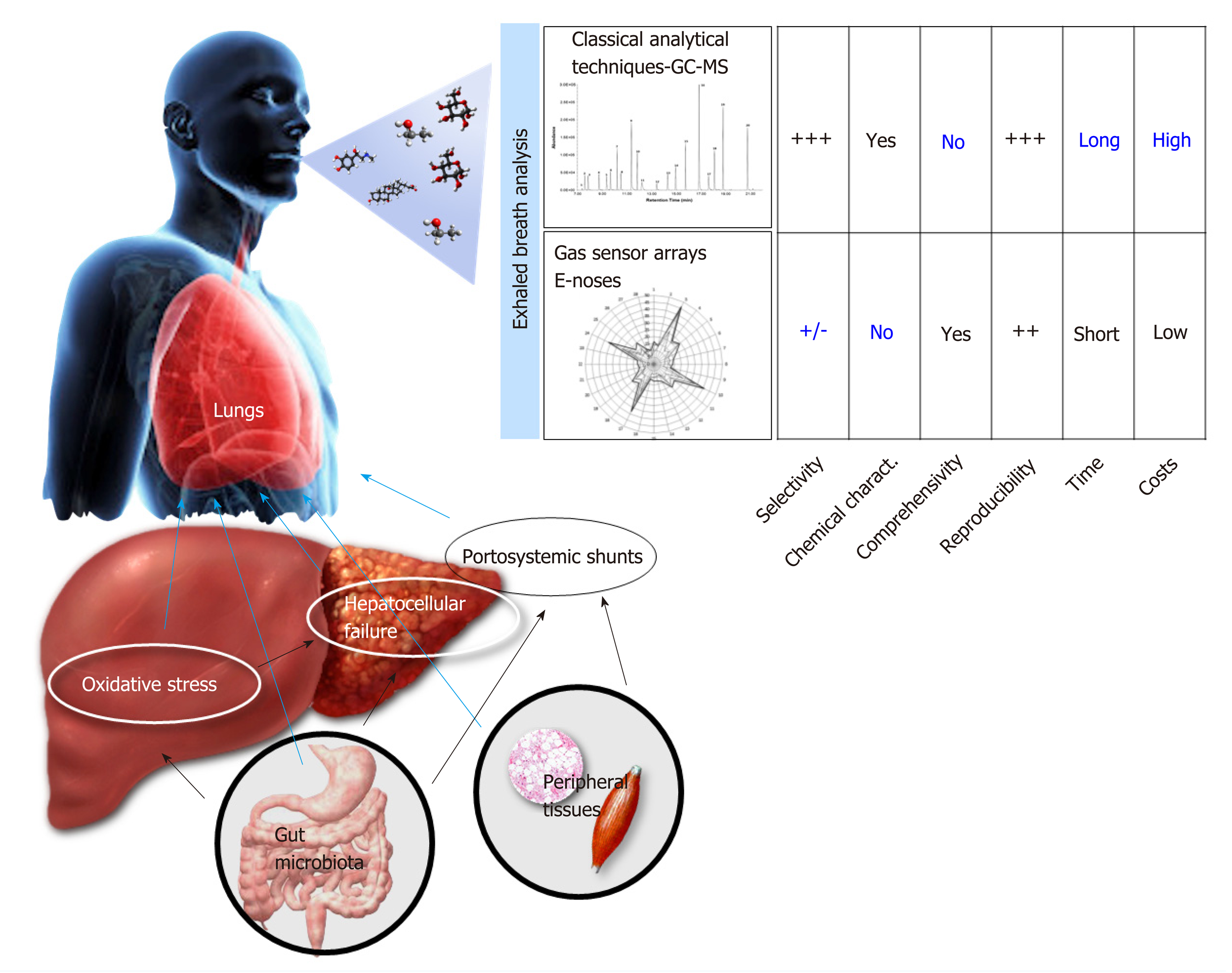Copyright
©The Author(s) 2019.
World J Gastroenterol. Aug 14, 2019; 25(30): 4043-4050
Published online Aug 14, 2019. doi: 10.3748/wjg.v25.i30.4043
Published online Aug 14, 2019. doi: 10.3748/wjg.v25.i30.4043
Figure 1 Schematic representation of volatile organic compounds origin in chronic liver disease and of the main technologies for exhaled breath analysis.
Many pathophysiological processes can be altered during the course of chronic liver disease, leading to the production of specific VOCs. Oxidative stress secondary to hepatic inflammation can induce the production of many derivatives of cell membranes peroxidation. With advancing liver fibrosis, other VOCs sources can be represented by many other metabolic pathways that can be deranged with progressive hepatocellular failure. Peculiar VOCs also derive from the gut microbiome or directly from peripheral tissues, bypassing the liver through portosystemic shunts, typical of liver cirrhosis. After exhaled through the breath, VOCs can be sampled, pre-concentrated and stored thanks to dedicated procedures that have been detailed elsewhere[6]. Then, exhaled breath analysis can be carried out through different techniques: (1) The classical analytic techniques based on GC-MS; (2) The gas sensor arrays, commonly dubbed e-noses. Each method has its own pros and cons. Analytical techniques have the advantage of exactly identifying the chemical structure of VOCs, but they are expensive and require long time and high economic resources to be performed on large scale. Conversely, e-noses are portable, cheaper, and easier to perform even in elderly and disabled patients but are less selective and cannot identify the chemical structure of each VOC. Given their different features, each technique is preferable in different research or clinical scenarios, as explained in the text. GC-MS: Gas chromatography and mass spectrometry; VOCs: Volatile organic compounds.
- Citation: De Vincentis A, Vespasiani-Gentilucci U, Sabatini A, Antonelli-Incalzi R, Picardi A. Exhaled breath analysis in hepatology: State-of-the-art and perspectives. World J Gastroenterol 2019; 25(30): 4043-4050
- URL: https://www.wjgnet.com/1007-9327/full/v25/i30/4043.htm
- DOI: https://dx.doi.org/10.3748/wjg.v25.i30.4043









